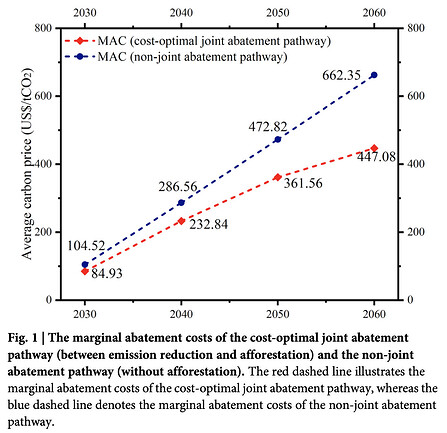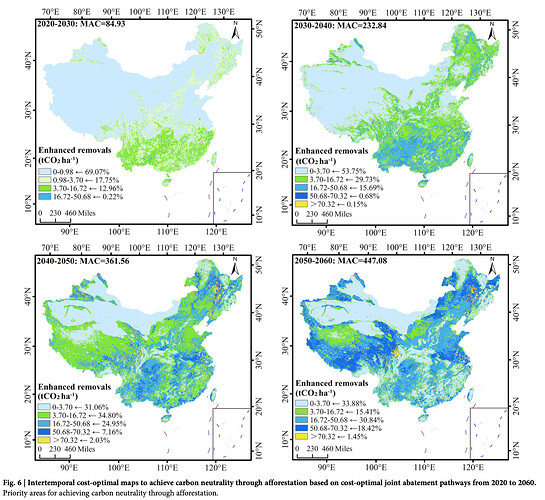This week, we deep dive into a paper recently published in Communications Earth & Environment. The study was conducted by a team of China-based researchers led by Xianghua Zhang, from the School of Economics of Jiangxi University of Finance and Economics in Nanchang (China).
This study, focusing on afforestation strategies, identifies cost-effective pathways that balance environmental benefits with economic feasibility in the context of China, up to 20260. Strategies to reduce the financial burden of large-scale afforestation projects are designed by employing a model that integrates ecological, economic, and policy dimensions. Key findings suggest that prioritizing specific regions and optimizing planting techniques can significantly lower costs while maximizing carbon sequestration.
The authors rely on a dynamic multi-model analysis framework to analyze the dynamics of marginal abatement costs (MAC) and estimate the cost-optimal contribution of afforestation and emission reduction sectors. Their findings show that achieving climate neutrality goals by relying on emissions reduction only would be biophysically feasible yet extremely burdensome financially. The authors also estimate the (cross-model) cost-optimal joint abatement pathway between emission reduction and afforestation. Consistent with other regional studies, results show that emission reduction plays a dominant role.
The study also looks at the identification of regions in China that offer the most cost-effective opportunities for afforestation to support the country’s carbon neutrality goals. By analyzing various factors such as land availability, climate conditions, and carbon sequestration potential, the study pinpoints areas where afforestation efforts can yield the greatest environmental impact at the lowest economic cost. Regional prioritization can help optimize resource allocation, ensuring that limited financial resources are directed toward the most efficient and impactful afforestation projects.
Here is a list of the main takeaways from this paper:
- This paper explores how afforestation can be a financially viable solution for China’s carbon neutrality goal by optimizing planting techniques and regions.
- A comprehensive model is developed, combining ecological, economic, and policy factors to identify the most cost-efficient afforestation pathways.
- The study highlights that focusing on specific regions for afforestation can significantly reduce costs while enhancing carbon sequestration potential.
Strategic afforestation can meet both carbon capture and economic feasibility targets, addressing China’s financial challenges in carbon neutrality. - The findings provide actionable insights for policymakers, emphasizing the importance of optimizing afforestation strategies to support China’s long-term climate objectives.
Read the full paper here: Optimizing afforestation pathways through economic cost mitigates China’s financial challenge of carbon neutrality

